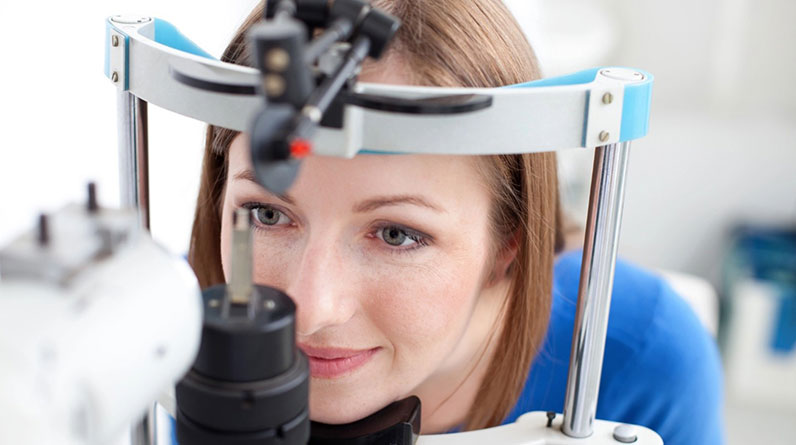
The Importance of Regular Eye Exams
Regular eye exams are an essential component of maintaining not only your vision but also your overall health. Our eyes are often referred to as windows to the soul, but they also serve as windows to our world.
Many eye conditions develop gradually and without noticeable symptoms, making routine eye exams the best way to achieve early detection and treatment. Beyond checking your vision, these exams can also uncover early signs of systemic health issues like diabetes, high blood pressure, and even neurological conditions.
In what follows, we’ll explore the importance of regular eye exams and why they should be a priority in your healthcare routine.
Monitoring Eye Health
Regular eye exams are more than just a check on how well you can see—they are part of general good health habits.
By examining your eyes, optometrists and ophthalmologists can detect not only vision issues but also a range of systemic diseases that may affect your entire body.
Additionally, these exams help ensure that your prescription needs are up-to-date, reducing the risk of eye strain and other vision-related problems. Here’s why regular eye exams and vigilant eye health monitoring are so important:
1. Detecting Systemic Diseases
Your eyes are unique in that they provide a clear view of blood vessels, nerves, and connective tissue without invasive procedures. Because of this, regular eye exams can reveal early signs of systemic diseases that might otherwise go unnoticed.
What Eye Exams Can Detect:
- Diabetes: Diabetic retinopathy, a complication of diabetes, is often detected through eye exams. Early signs include damage to the blood vessels in the retina, which can lead to blindness if not treated.
- High Blood Pressure: Hypertension can cause changes in the blood vessels of the retina, such as narrowing, bleeding, or swelling, which can be detected during an eye exam.
- Cholesterol Levels: High cholesterol can sometimes be identified through deposits in the blood vessels of the retina.
- Autoimmune Diseases: Conditions like lupus and multiple sclerosis may manifest in the eyes, often before other symptoms arise.
- Thyroid Disease: Thyroid-related eye disease can cause bulging eyes, double vision, and other symptoms that are detectable during an eye exam.
2. Identifying Visual Prescription Needs
Vision changes can happen gradually, making it difficult to notice when your prescription is no longer adequate. Regular eye exams ensure that your prescription is current, providing you with the sharpest vision possible.
Why This Matters:
- Preventing Eye Strain: An outdated prescription can cause eye strain, headaches, and difficulty focusing, especially during tasks like reading or using a computer.
- Improving Quality of Life: Clear vision is essential for everyday activities such as driving, reading, and working. Ensuring that your prescription is accurate allows you to perform these tasks safely and comfortably.
- Protecting Your Eyes: An incorrect prescription can exacerbate underlying eye conditions, leading to further deterioration of your vision over time.
3. Avoiding Digital Eye Strain
In today’s digital age, many of us spend hours each day staring at screens. This can lead to digital eye strain, also known as computer vision syndrome, which is characterized by discomfort and vision problems.
How Eye Exams Help:
- Assessing Your Vision Needs: During an eye exam, your doctor can assess whether you need glasses specifically designed for computer use, which can help reduce eye strain.
- Providing Tips for Relief: Eye care professionals can offer guidance on reducing digital eye strain, such as following the 20-20-20 rule (every 20 minutes, look at something 20 feet away for at least 20 seconds).
- Identifying Underlying Issues: Sometimes, digital eye strain is exacerbated by uncorrected vision problems. Regular eye exams can identify these issues, allowing for appropriate correction and relief.
Regular eye exams are a vital aspect of monitoring your eye health and overall well-being. They play a key role in detecting systemic diseases early, ensuring your prescription is up-to-date, and helping you avoid the discomfort and potential damage of digital eye strain.
Frequency of Eye Exams
The frequency of eye exams varies depending on your age, overall health, and specific eye conditions.
Regular eye exams at appropriate intervals assure healthy vision and catching potential issues early. Here, we’ll explore general guidelines for different age groups and the factors that might necessitate more frequent visits to your eye care professional.
General Guidelines for Different Age Groups
- Infants and Toddlers (Birth to 2 Years)
It is recommended that a child have their first eye exam at 6 months of age to ensure proper eye development and early detection of any issues. If no issues are detected, the next exam is typically recommended at age 3. - Preschool Children (Ages 3 to 5)
Children should have at least one eye exam between ages 3 and 5 to check for vision problems like amblyopia (lazy eye) or strabismus (crossed eyes). - School-Age Children (Ages 6 to 18)
School-age children should have an eye exam every two years if they do not require vision correction. If they wear glasses or contact lenses, annual exams are recommended to monitor changes in vision. - Adults (Ages 18 to 60)
Adults should have an eye exam every two years. Those who wear glasses or contact lenses should have annual exams to ensure their prescription is up-to-date and to monitor eye health. - Seniors (Ages 61 and Older)
After age 60, annual eye exams are recommended. As we age, the risk of developing eye conditions such as cataracts, glaucoma, and age-related macular degeneration increases, making regular monitoring a standard.
Regular eye exams are an important aspect of maintaining both your eye health and overall well-being. By adhering to the recommended guidelines for your age group and considering any additional factors that may necessitate more frequent visits, you can ensure early detection of potential issues and keep your vision sharp.
